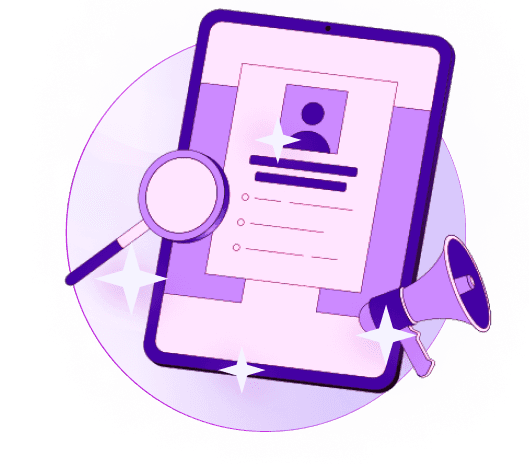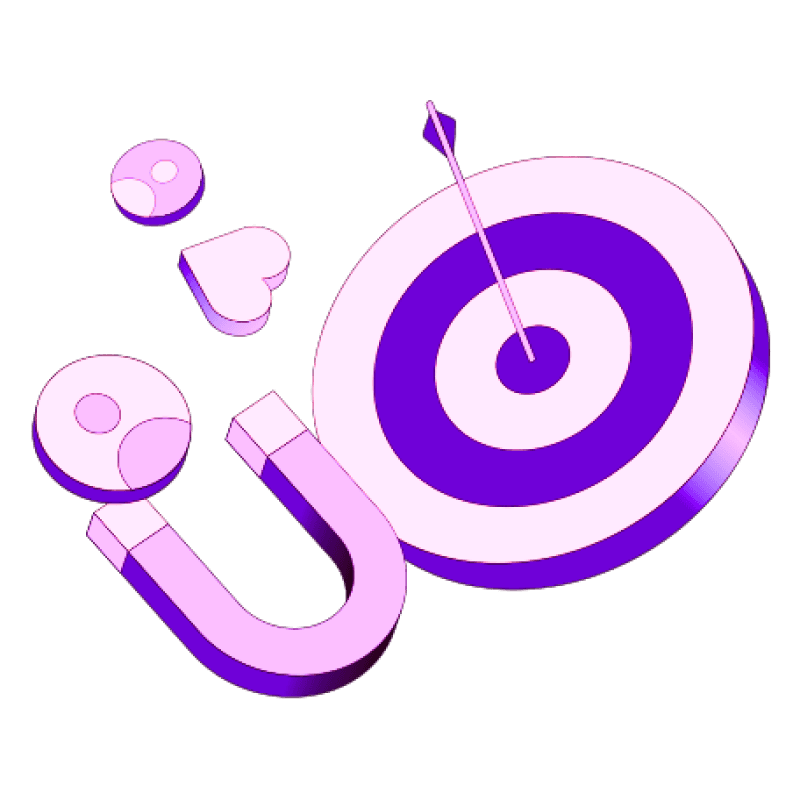Blogs
Articles

7 AI-Driven Revenue Workflows to Boost Sales Efficiency in 2025
Did you know sales reps spend only 28% of their week selling? The rest of their time disappears into administrative tasks and activities that don't generate revenue.
Most companies (92%) will invest more in AI over the next three years. Your team belongs to the 55% already using AI weekly. This puts you ahead—but are you discovering its full potential?
This piece explores seven powerful AI-driven workflows that will boost your sales efficiency in 2025. These strategies will help you join the 78% of sales teams with improved pipeline management through automation. This applies whether you're new to AI or ready to enhance your current processes.
AI-Driven Sales: A New Era of Efficiency
AI automation in sales isn't just another tech trend it's changing how businesses make money and operate. Sales professionals spend only about 25% of their time actually selling to customers. This gives businesses an amazing chance to transform their operations through AI-driven approaches.
Why 2025 is a turning point for AI in sales
The year 2025 marks a decisive moment for AI adoption in sales. An IBM Institute for Business Value report shows 92% of executives anticipate their organization's workflows will use AI-enabled automation by 2025. By 2026, 83% of executives believe AI agents will act on their own based on operational metrics and transaction histories.
Here's what's making this change happen faster:
Technology has reached a tipping point. Recent breakthroughs in natural language processing, machine learning algorithms, and computing power have made AI tools work better and more available to sales teams. These advances allow capabilities that weren't possible before.
Market adoption is growing faster. Right now, 28% of executives are testing AI-led intelligent workflows, and 34% are expanding them across their organizations. This shows strong momentum toward widespread use.
The results speak for themselves. Organizations using AI-powered workflows see efficiency improvements of 10-15% consistently. Companies that use AI in sales processes have seen their win rates improve by more than 30% through better lead identification and qualification.
The meaning of AI-driven workflows in business context
AI-driven workflows use artificial intelligence tools to automate repetitive business tasks. Their effect goes way beyond simple automation.
These workflows create systems that change how sales teams work. They provide:
Task automation and prioritization: AI takes care of administrative work like data entry and CRM updates. This lets sales professionals build better relationships. Bain's research suggests AI could double the time sales representatives spend with customers.
Intelligent decision support: AI gives actionable insights by blending data from CRM systems, backend databases, and business applications. Sales representatives get a complete view of their customers with context-rich recommendations.
Process orchestration: AI workflows connect separate systems and create efficient processes that remove bottlenecks. Sales cycles become shorter and productivity gets better.
AI-driven workflows do more than automate they transform sales operations. McKinsey reports that generative AI could add between $2.60 trillion and $4.40 trillion annually across analyzed use cases. About 75% of this value comes from four areas, including marketing and sales.
Workflow 1: Predictive Lead Scoring
Predictive lead scoring has become one of the most powerful AI-driven revenue workflows that sales teams can access. Sales teams used to rely on gut feelings and static rules for traditional lead scoring. Now, AI-powered predictive lead scoring uses machine learning to identify prospects most likely to convert based on historical data and behavioral patterns.
How AI ranks leads based on behavior and fit
Data science and machine learning help analyze vast amounts of information to determine shared traits among leads that converted in the past versus those that didn't. AI gets into multiple dimensions at once, unlike manual methods:
Behavioral data: Website visits, email engagement, content downloads, webinar attendance, and sales email interactions
Firmographic information: Industry, company size, and technology stack
Demographic details: Job titles, decision-making authority, and location
Engagement metrics: Frequency and recency of interactions across channels
AI's real power lies in how it weighs these factors. The algorithms automatically identify important characteristics based on successful conversions rather than using predetermined point values. To name just one example, visiting your pricing page three times might indicate stronger purchase intent than downloading five whitepapers.
Reducing time spent on low-quality prospects
Sales representatives waste too much time pursuing leads with little conversion potential. AI lead scoring addresses this problem by automating the identification of high-value opportunities.
The results speak for themselves 98% of sales teams using AI report better lead prioritization. This number shows how well AI separates promising prospects from those unlikely to convert.
AI lead scoring brings several clear benefits for sales efficiency:
AI eliminates manual data input and analysis. Teams can focus on strategic activities and relationship building as the most demanding scoring tasks become automated. Studies show sales teams using AI-powered lead scoring tools save up to 30% of their time. They can redirect this time toward high-value activities like relationship building and closing deals.
Human bias and errors disappear with AI-driven lead scoring. Teams get more objective evaluations and consistent application of qualification criteria across all leads.
Workflow 2: Personalized Outreach Automation
Customers today expect customized experiences - research shows 71% of them just need personalization, while 76% get frustrated when businesses don't deliver. Sales strategies must include personalized outreach as a vital component.
Using AI to tailor messages at scale
Simple name insertion in email greetings doesn't cut it anymore. Each recipient deserves messages that speak to their unique challenges and priorities. Sales teams can't manually customize messages for hundreds or thousands of prospects.
AI-powered personalization solves this challenge. The system analyzes customer data, behavior patterns, and company details. Sales teams can now create authentic-feeling outreach that scales effectively.
AI tools excel at several tasks:
Product suggestions based on purchase and browsing patterns
Message optimization through engagement analysis
Automated prospect research that saves preparation time
Smart follow-ups triggered by recipient actions
AI-driven personalization makes best practices systematic. One user shared their experience: "It personalizes the outreach so well that prospects have complemented me for my research and outreach! When really, it was written by [AI] and took little effort from me".
Dynamic content generation for emails and ads
Dynamic content adapts email elements automatically based on user behavior and priorities. Combined with AI, these elements become predictive and appeal to each recipient.
Smart algorithms power AI-driven dynamic content in multiple ways. Machine learning studies past interactions like clicks, purchases, and email opens to predict engaging content. Natural language processing suggests effective subject lines and body text by analyzing tone and context. Predictive analytics serves relevant content before users show interest.
Results speak for themselves. Marketing teams create customized content 50 times faster using AI. Generative AI helps marketers build cohesive personalization that matches customer priorities perfectly.
Improving open and response rates
AI-powered personalization dramatically boosts engagement metrics. Companies using AI-driven email strategies see engagement rates jump up to 10 times higher than standard methods. AI-generated customized emails get three times more replies.
Three key AI capabilities drive this success:
Smart timing leads the way. AI finds each recipient's peak attention window by studying their behavior patterns. This precision matters - 23% of emails get opened within hour one, dropping by half in hour two.
Subject lines come next. AI crafts compelling headlines by analyzing successful patterns, wording choices, and emotional impact. Customized cold outreach gets 10% more opens, making this optimization valuable.
Content relevance rounds it out. AI groups audiences by their actions, purchases, and browsing to deliver personally relevant content. This targeted approach builds stronger connections and keeps people engaged longer.
Sales teams benefit from these AI-driven workflows. They save countless research hours while getting better results.
Workflow 3: Intelligent Sales Forecasting
Most organizations still struggle with accurate sales forecasting. Studies show that 80% of companies missed their revenue targets in the last two years. This challenge makes intelligent sales forecasting a significant ai-driven revenue workflow for businesses that want predictable results in an unpredictable market.
AI models for revenue prediction
Sales forecasting traditionally depends on historical data and manual tweaks, which often leads to major errors. AI-powered forecasting systems now analyze big amounts of structured and unstructured data through complex algorithms. These systems can process hundreds of factors that affect revenue at once, such as pricing changes, promotional effectiveness, customer churn rates, and seasonal buying patterns.
AI forecasting becomes powerful because it can:
Learn about pipeline health by connecting past trends with live deal signals
Track actual momentum beyond rep inputs using predictive insights
Spot early warning signs of changes in customer buying patterns
Find hidden trends and flag issues before revenue losses occur
Modern machine learning models can test and verify multiple forecasting approaches with minimal human input. They pick the best choice for each business situation. These systems learn from outcomes and become more accurate with each cycle.
Reducing forecast errors with real-time data
AI-driven forecasting significantly improves accuracy. Companies using these systems report forecast error reductions of 20-50%. A global high-tech hardware manufacturer's forecast errors dropped by 70-100% after they started using an AI forecasting solution.
AI's power to process live data and spot new patterns continuously drives this remarkable improvement. Unlike old methods that need constant manual updates, AI-driven systems automatically add fresh information. They can quickly respond as they predict demand changes instead of just reacting to them.
Money savings prove impressive too. Better forecasting accuracy cuts lost sales and product shortages by up to 65%. Warehouse costs can drop by 5-10%, while admin costs might decrease by 25-40%. One company found a chance to cut inventory by 7%, potentially saving $300 million.
Aligning sales and finance teams
Smart forecasting builds a unified base for teams that usually work separately. It standardizes forecasting across all models subscription, usage, enterprise, and hybrid. Teams get full visibility without spreadsheets or manual rollups. It removes differences by combining data from previously separate systems.
Finance and revenue operations teams (95%) feel confident planning from existing forecasts, yet 98% find it hard to make accurate ones. AI fixes this issue by creating an ongoing feedback loop: forecasting predicts, teams adjust, check results, and use these lessons in the next cycle.
Benefits go beyond just better data. AI-driven forecasting helps teams:
Combine hard numbers, deal context, and AI-backed signals for boardroom-ready forecasts
Run consistent forecasting, pipeline reviews, and QBRs on regular schedules
Create structured routines that keep reviews consistent and risks visible
Workflow 4: Conversational AI Assistants
Conversational AI is reshaping the sales scene faster than ever. About 74% of sales professionals now use some form of AI in their operations. These AI assistants analyze and mirror natural human-like dialog to blend interactions with prospects and customers, unlike traditional automation tools.
Virtual SDRs for lead qualification
AI-powered Sales Development Representatives (SDRs) have reshaped how companies qualify leads by handling initial customer interactions on their own. These virtual agents figure out if prospects are ready to buy by studying their responses and behavior patterns. They use structured frameworks like BANT (Budget, Authority, Need, Timeline) or CHAMP (Challenges, Authority, Money, Prioritization) to review leads methodically.
The results speak for themselves. Teams with AI SDRs see 3.5x higher contact rates and 30% better conversion rates than traditional methods. A recent case study showed how AI helped a sales team filter out 90% of unqualified leads. The AI booked six meetings, four turned into proposals, and one deal closed without any human help.
Virtual SDRs shine at:
Creating custom emails and follow-ups using CRM data
Handling questions and objections in natural language
Setting up meetings directly in sales reps' calendars when interest peaks
Updating CRM records with conversation details automatically
24/7 engagement through chat and voice
AI assistants never sleep - that's their biggest advantage. They work non-stop and talk to leads at the best times, whatever the time zone. Quick responses matter - leads are 21x more likely to convert if contacted within five minutes.
Modern AI assistants adapt to customer priorities across web chat, email, SMS, and voice. Advanced systems feel natural to talk to, with tiny delays of just 500ms that keep conversations flowing. The technology now handles different accents, dialects, and speech patterns easily, giving users a smooth experience across all channels.
These systems do more than just chat. They utilize AI voice recognition to tell if conversations are going well or poorly in real-time. This helps them respond better and know when to bring in human help.
Reducing rep workload without losing the human touch
AI assistants make sales reps better instead of replacing them. They record and transcribe calls automatically so anyone can search through conversations later. Important details like competitor mentions, customer problems, and pricing discussions stand out. This makes preparing for calls quicker and helps spot deals that might be at risk.
Sales reps love how AI handles paperwork. It takes care of data entry, schedules meetings, and pulls sales data from everywhere. This gives sales professionals more time for what they love - 82% say building relationships and connecting with people are the best parts of their job.
Sales leaders can coach better with these AI-powered systems. They spot potential issues during calls like talking too much or missing chances to discuss pricing or competition. The AI tracks things like talk time, call length, and how interactive conversations are. This helps managers give better feedback to their teams.
Finding the right mix of automation and personal touch is vital. The best systems handle 80-90% of conversations on their own while naturally passing complex issues to human reps.
Workflow 5: Workflow Orchestration and Task Automation
Sales workflow orchestration has become a game-changer in today's market. Research shows 70% of sales representatives devote more time to paperwork than selling. This imbalance shows why companies need task automation to succeed in sales.
Trigger-based automation across CRM and email
AI workflow automation has reshaped sales operations by connecting AI systems, models, data, and people into one naturally functioning system. Unlike basic rule-based systems that follow fixed instructions, these workflows adapt, learn and get better with time.
Smart workflows respond to specific customer actions:
A lead downloads content like a whitepaper at any time, and AI starts a personalized follow-up sequence right away
The right sales representative gets instant alerts when prospects check pricing or product demo pages
The system launches relevant sequences based on email opens, website visits, or CRM updates without human input
This technology goes beyond basic automation. Modern systems can evaluate multiple factors at once—lead scores, competitor mentions, sentiment changes, and response speed. The system then updates stages, redirects leads, or brings in executive sponsors.
HubSpot shows this capability through its workflow builder that automates sales tasks based on customer behavior. A lead downloads a whitepaper, and HubSpot assigns a score, starts email nurturing, and alerts the sales team.
Reducing manual follow-ups and admin tasks
Automated workflows boost productivity significantly. Sales teams save up to 4 hours each day and reduce errors by 80%. Companies that use AI CRM tools see a 25% improvement in sales efficiency.
Teams get several key advantages:
Elimination of repetitive tasks: AI takes care of data entry, lead scoring, and follow-ups. Sales teams can focus on strategy instead of paperwork
Error reduction: Automated processes run constantly without getting tired, which cuts down human errors in critical sales tasks
Proactive monitoring: Systems track performance metrics continuously. Teams spot and fix issues before they hurt business results
The financial rewards look promising. The AI in CRM market will reach USD 13.40 billion by 2025, growing 43.7% yearly. This growth shows how much value these systems bring to businesses.
AI-driven revenue workflows create unified systems where information moves freely between departments. Marketing, sales, and revenue teams work from the same data without manual exports or missing context.
Lindy improves efficiency with specialized AI agents for different sales tasks. These agents work solo or together to handle lead enrichment, email follow-ups, and deal updates. They pull information from contracts and proposals to update CRM records.
The real value of workflow orchestration lies in creating consistent processes. Teams work together better, and sales professionals can focus on their strength—building customer relationships.
Workflow 6: Buying Intent Detection and Signal Analysis
Buyer intent signals show digital traces that reveal when prospects actively research solutions like yours. The modern data-rich landscape has made these signals crucial for sales efficiency. Research shows that 65% of sales reps say access to buyer intent data helps them close deals more often.
Tracking digital behavior to identify hot leads
Smart intent detection looks at several behavioral patterns at once:
Website activity: Multiple visits to pricing/demo pages show serious interest
Content consumption: Whitepaper downloads and webinar attendance suggest research phase
Email engagement: Strong open/click-through rates demonstrate active interest
Third-party data: Search patterns and review site activity show external research
Conversation intelligence: Questions about timelines or integration suggest purchase readiness
AI-driven intent detection stands out because it can combine data from many channels. The system pulls behavioral information from CRM, email, chat, call recordings, and website analytics to create a complete intent profile for each lead. These systems do more than collect data - they interpret it. Smart algorithms analyze context and sentiment from conversations and detect tone, keywords, and emotional signals that reveal hidden buying patterns.
Prioritizing outreach based on immediate signals
Signal-based prioritization creates remarkable business results. ZoomInfo's early adopters of signal-based selling saw engagement jump by 58%, email responses increase by 62%, and secured 25% more pipeline.
AI reveals more than website visitors - it shows their purpose and purchase readiness. Sales teams can now:
Target leads showing immediate intent instead of cold prospects
Connect with buyers during active solution research
Get instant alerts when buying signals increase
Sales professionals now work with laser focus. To name just one example, AI flags a lead as "hot" when they visit the pricing page twice in 24 hours, triggering a quick response. Quick responses to buyer signals help you connect with prospects right when they show interest.
These AI-driven revenue workflows turn scattered data into clear sales guidance. One platform puts it simply: "Stop guessing and start knowing".
Workflow 7: AI-Driven Pricing and Deal Optimization
AI-driven price optimization leads revenue workflows and affects your bottom line significantly. Companies that use AI-driven price optimization see their margins grow by 2-5%. Some businesses report revenue increases of up to 10%.
Dynamic pricing based on buyer profile and market data
AI pricing engines can analyze multiple data sources at once. These include competitive intelligence, market trends, and customer behavior. The systems combine smoothly with structured data like costs and sales figures, along with unstructured information from customer reviews and social media. This creates pricing that adapts immediately to market changes.
Advanced geoanalytics help the technology determine what local customers will pay. This enables customized pricing for different customer segments. A grocery chain found products that were 20-30% cheaper than competitors. They raised prices to just below competitor levels, which improved margins without losing sales volume.
AI recommendations for discounting and bundling
AI changes product bundling by automating recommendations based on what customers want and need. The systems spot which products customers buy together, which makes bundle discounts more attractive.
AI adjusts bundle offers based on:
Seasonal trends (summer travel bundles, holiday tech packages)
Stock availability (preventing out-of-stock items in bundles)
Immediate purchase behavior (grouping trending items)
AI analyzes price sensitivity to prevent too much discounting on high-margin items. This creates a strategic balance between value and profitability.
Conclusion
AI-driven revenue workflows give sales teams a remarkable chance to win back their selling time and maximize results. This piece explores seven powerful approaches that help fix major gaps in modern sales operations. Sales teams who use predictive lead scoring spend nowhere near as much time pursuing low-value prospects. They can focus their energy on leads that show real conversion potential.
Smart outreach automation boosts your team's efficiency by delivering relevant messages without countless hours of manual work. Your sales leaders can also benefit from intelligent forecasting that provides reliable revenue projections instead of guesswork.
Conversational AI works around the clock to qualify leads and answer questions without draining human resources. Task automation removes the administrative load that takes up 72% of sales representatives' time. Your team can finally concentrate on building relationships that generate revenue.
Signal-based prospecting turns scattered information into practical guidance. Your team connects with buyers right when their interest peaks. AI-driven pricing helps optimize deals that maximize profits while staying competitive in the market.
Sales teams that will succeed in 2025 are the ones that welcome these AI-powered workflows now. You can learn more about these revenue-generating techniques in our complete resource library at Persana's blog. Your competitors will adopt these tools soon. The real question is whether you will lead or follow in this new age of AI-powered sales efficiency.
Key Takeaways
These seven AI-driven workflows will transform your sales efficiency by automating time-consuming tasks and focusing efforts on high-value activities that directly drive revenue growth.
• Predictive lead scoring eliminates guesswork - AI analyzes behavioral data to rank prospects, helping teams achieve 25% higher conversion rates while reducing time spent on low-quality leads.
• Personalized outreach scales without sacrificing quality - AI-powered personalization delivers 3x higher reply rates and 10x better engagement by tailoring messages based on prospect behavior and preferences.
• Intelligent forecasting reduces errors by up to 50% - Machine learning models analyze real-time data to create accurate revenue predictions, aligning sales and finance teams around reliable projections.
• Conversational AI handles routine tasks 24/7 - Virtual SDRs qualify leads and engage prospects around the clock, achieving 3.5x higher contact rates while freeing human reps for relationship building.
• Workflow automation saves 4 hours daily per rep - Trigger-based systems eliminate manual follow-ups and administrative tasks, allowing sales professionals to focus on actual selling activities.
• Intent signals identify hot prospects in real-time - AI tracks digital behavior across channels to flag buying signals, resulting in 58% higher engagement when teams respond to active research behavior.

Create Your Free Persana Account Today
Join 5000+ GTM leaders who are using Persana for their outbound needs.
How Persana increases your sales results
One of the most effective ways to ensure sales cycle consistency is by using AI-driven automation. A solution like Persana, and its AI SDR - Nia, helps you streamline significant parts of your sales process, including prospecting, outreach personalization, and follow-up.



